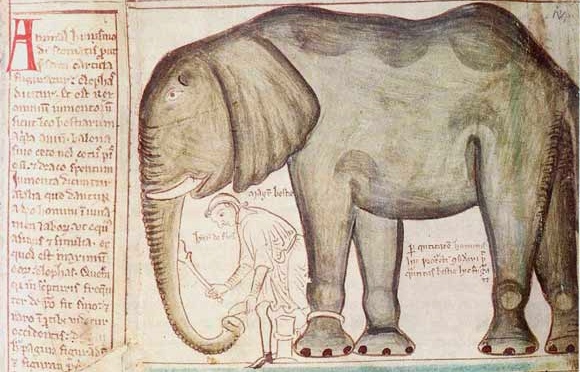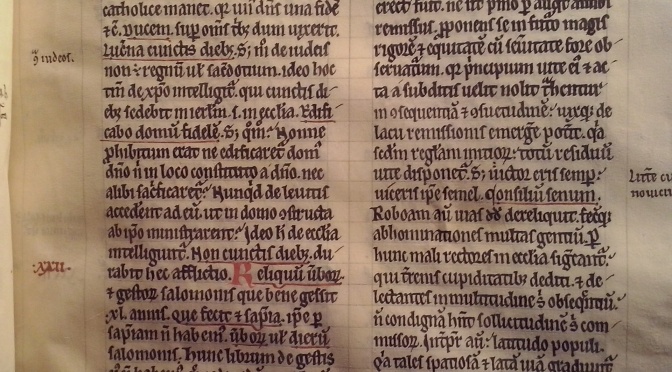Because what’s a party without a game of ‘Guess the medieval Bible story’? (Scroll to the end for the answers.)

Clue: It helps to know that Moses is often portrayed in medieval artwork with horns, based on Jerome’s literal translation of the Hebrew word ‘qaran’ as ‘cornuta’ (‘horned’) to describe the shining of Moses’ face after speaking with God on Mt Sinai (Ex. 34:29).







Next round, it’s going to be Guess the Medieval Animal …

Answers:
- Moses and the burning bush (Exodus 3)
- An angel visits the Magi in a dream (Matthew 2)
- Jacob wrestles with the Angel (Genesis 32)
- Moses and the Israelites receive manna from heaven (Exodus 16)
- Jonah and the whale (Jonah 1-2)
- Jesus in the Temple as a boy (Luke 2)
- Samson carries away the gates of Gaza (Judges 16)
- Rahab hangs a scarlet cord from the walls of Jericho (Joshua 2)
- A camelopardalis (otherwise known as a giraffe!)
More information on these manuscripts:
- Bayerische Staatsbibliothek, Clm 14159 – Dialogus de laudibus sanctae crucis, late 12th c.
- Bodleian Library, Arch. G c. 14 – Biblia Pauperum [blockbook], late 15th c.
- British Library, Harley 1527 – Bible Moralisée, mid-13th c.
- British Library, Kings MS 5 – Biblia Pauperum, early 15th c.
- Koninklijke Bibliotheek, KA 16 – Der Naturen Bloeme, mid. 14th c.





![Minding My P[er]’s & Q[uae]’s](https://scrawlingspires.files.wordpress.com/2017/04/cappelli-qs.png?w=672&h=372&crop=1)

